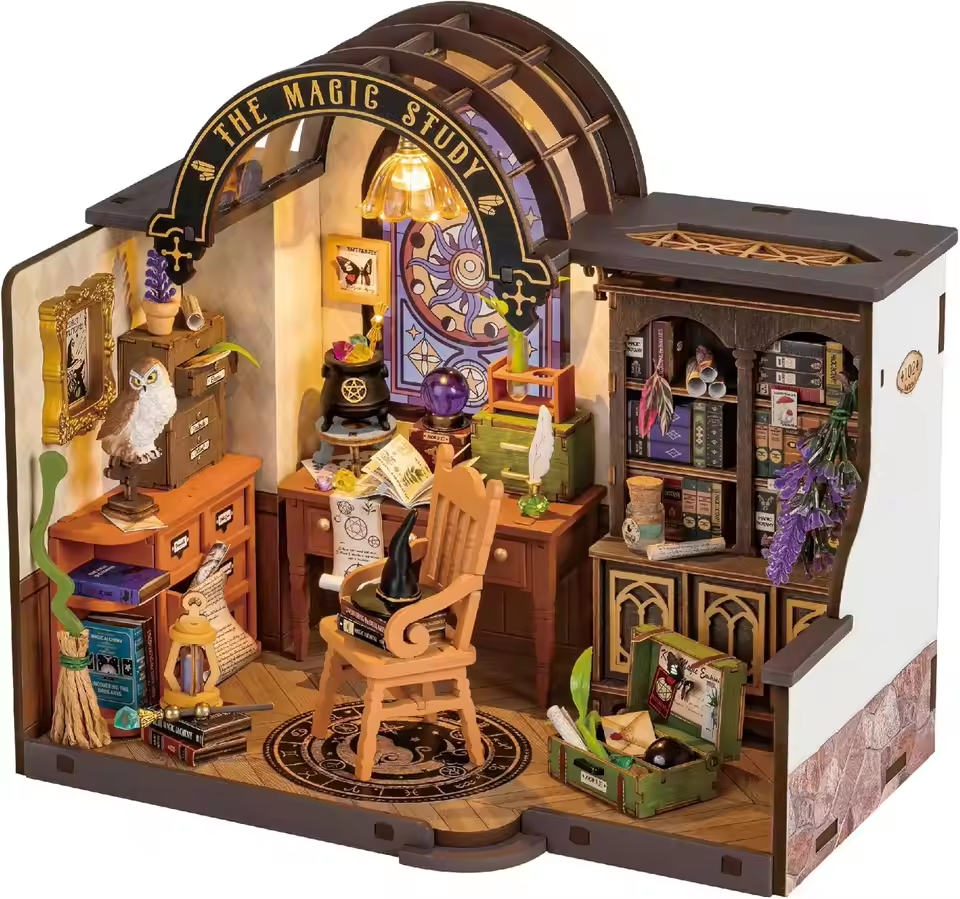Part 1: Introduction to High-Performance RC Cars
High-performance RC cars are the epitome of speed and agility in the world of remote-controlled vehicles. This article will explore the science behind high-performance RC cars, including key factors that contribute to their exceptional speed and handling.
Part 2: Understanding the Powertrain
1. Brushless Motors: The Heart of High-Performance RC Cars
Brushless motors have revolutionized the RC car industry, offering significant advantages over traditional brushed motors. These motors are characterized by their high efficiency, power output, and durability.
Efficiency: Brushless motors convert electrical energy into mechanical energy more efficiently than brushed motors. This results in higher speeds, longer run times, and reduced heat generation.
Power Output: Brushless motors can deliver significantly more power than brushed motors. This translates to higher top speeds, quicker acceleration, and the ability to tackle demanding terrain with ease.
Durability: Brushless motors lack the physical brushes that are prone to wear and tear in brushed motors. This makes them more durable and reliable, reducing the need for frequent maintenance.
By upgrading to a high-performance brushless motor, you can significantly enhance your RC car’s capabilities and performance.

2. Electronic Speed Controllers (ESCs): The Brains Behind the Power
An electronic speed controller (ESC) is the electronic brain that regulates the power flow from the battery to the motor. Upgrading to a high-performance ESC can improve your RC car’s control, responsiveness, and overall performance.
Advanced Features: Modern ESCs offer a range of advanced features, such as adjustable timing, braking, and reverse. These features allow you to fine-tune your RC car’s performance to suit your specific needs.
Higher Amp Rating: A higher amp rating enables the ESC to handle more current, allowing you to use more powerful motors and batteries.
Thermal Protection: High-performance ESCs often include advanced thermal protection features to prevent overheating and damage. This ensures reliable performance even during intense driving conditions.
By upgrading your ESC, you can unlock the full potential of your RC car’s motor and achieve optimal performance.
Part 3: Aerodynamics and Design
1. Wind Tunnel Testing: Sculpting the Air
Wind tunnel testing is a crucial step in the development of high-performance RC cars. By subjecting the vehicle to controlled airflow, engineers can analyze its aerodynamic characteristics and identify areas for improvement.
Aerodynamic Efficiency: Wind tunnel testing helps engineers minimize drag, the force that resists the forward motion of the vehicle. By reducing drag, RC cars can achieve higher top speeds and improved fuel efficiency.
Downforce Generation: Downforce is the force that pushes the car downward, increasing traction and stability. By carefully designing the car’s bodywork, engineers can generate downforce, which is particularly important for high-speed cornering and stability.
Optimizing Airflow: Wind tunnel testing helps identify areas where airflow can be optimized to improve cooling efficiency. Proper airflow can help prevent overheating of the motor, ESC, and battery, ensuring consistent performance.
By using wind tunnel testing, manufacturers can create RC cars that are not only fast but also efficient and stable.

2. Lightweight Materials: The Key to Performance
The use of lightweight materials is a critical factor in achieving high performance in RC cars. By reducing the overall weight of the vehicle, manufacturers can improve acceleration, handling, and top speed.
Carbon Fiber: Carbon fiber is a strong and lightweight material that is commonly used in high-performance RC cars. It provides excellent strength-to-weight ratio, allowing for lightweight and rigid chassis and bodywork.
Aluminum: Aluminum is another lightweight material that is often used in RC car construction. It offers good strength and durability, making it ideal for chassis components and suspension parts.
High-Grade Composites: Composite materials, such as fiberglass and carbon fiber composites, are used to create lightweight and strong body shells. These materials can be customized to achieve specific aerodynamic shapes and provide excellent protection for the vehicle’s internal components.
Part 4: Suspension and Handling
1. Adjustable Suspension Geometry: Fine-Tuning for Peak Performance
Adjustable suspension geometry is a critical feature in high-performance RC cars, allowing drivers to fine-tune the vehicle’s handling and performance to suit various driving conditions. By adjusting parameters like camber, caster, and toe, drivers can optimize the vehicle’s stability, responsiveness, and traction.
Camber: Camber refers to the angle of the wheels relative to the vertical axis. Adjusting camber can significantly affect a vehicle’s cornering ability, tire wear, and overall handling.
Caster: Caster is the angle of the steering axis relative to the vertical. It influences steering feel, responsiveness, and steering return.
Toe: Toe refers to the angle of the wheels relative to the longitudinal axis of the vehicle. Adjusting toe can affect steering feel, tire wear, and straight-line stability.
By carefully adjusting these parameters, drivers can tailor their RC car’s handling characteristics to their specific preferences and the demands of the track or off-road course.

2. Oil-Filled Shocks: The Secret to a Smooth Ride
Oil-filled shocks are a key component of high-performance RC cars, providing superior damping and shock absorption compared to standard friction shocks. These shocks are essential for maintaining stability, control, and performance on various terrains.
Damping Control: Oil-filled shocks use hydraulic fluid to dampen the suspension’s movement, reducing the impact of bumps and vibrations. This improved damping control helps to maintain tire contact with the ground, enhancing traction and stability.
Adjustable Damping: Many high-performance RC cars feature adjustable oil-filled shocks, allowing drivers to fine-tune the damping characteristics to suit different track conditions. By adjusting the shock’s spring rate and oil viscosity, drivers can optimize the suspension’s performance for specific needs.
Durability: Oil-filled shocks are more durable than standard friction shocks, as they are less prone to wear and tear. This increased durability ensures consistent performance over time, even in harsh conditions.
Part 5: Tire Technology and Grip
1. High-Traction Tires: The Grip Masters
High-performance RC cars rely on specialized tires to deliver exceptional performance on a variety of surfaces. These tires are designed to maximize grip, enhance acceleration, improve cornering, and provide superior braking performance.
Tread Patterns: The tread pattern of a tire plays a crucial role in its performance. Aggressive tread patterns with deep lugs provide excellent traction on loose surfaces like dirt and gravel. On the other hand, slick or low-profile tires offer superior grip on smooth surfaces like asphalt or concrete.
Tire Compound: The tire compound determines the tire’s grip, durability, and performance in different temperature conditions. Softer compounds offer better grip but may wear out faster, while harder compounds are more durable but may sacrifice some grip.
By selecting the right tires for your specific needs, you can significantly improve your RC car’s performance and handling.

2. Foam Inserts and Tire Compounds: The Secret to Optimal Performance
Foam inserts and tire compounds are two key factors that influence an RC car’s tire performance. These components work together to provide optimal traction, grip, and handling.
Foam Inserts: Foam inserts are placed inside the tires to provide support and control the tire’s flex. Different foam compounds and densities can be used to fine-tune the tire’s characteristics. Softer foam inserts offer more grip but may wear out faster, while harder inserts provide better durability but may sacrifice some grip.
Tire Compounds: The tire compound determines the tire’s grip, durability, and performance in different temperature conditions. Softer compounds offer better grip but may wear out faster, while harder compounds are more durable but may sacrifice some grip.
Part 6: Power and Battery Technology
1. High-Capacity LiPo Batteries:
LiPo batteries have revolutionized the RC car industry, offering unparalleled power and performance. These high-capacity, high-discharge batteries provide the energy density needed to fuel high-speed, high-torque motors, enabling RC cars to achieve impressive acceleration, top speed, and extended run times.
LiPo batteries are designed to deliver consistent power output throughout their discharge cycle, ensuring sustained performance even during intense racing or off-roading. Additionally, LiPo batteries can be recharged quickly, minimizing downtime between runs. This rapid charging capability allows enthusiasts to maximize their driving time and enjoy more frequent action.

2. Advanced Cooling Systems:
Innovative cooling systems are essential for maintaining optimal performance in high-performance RC cars. By effectively dissipating heat, these systems prevent overheating, which can lead to reduced performance, decreased battery life, and potential damage to the electronics.
One common cooling technique involves the use of aluminum heat sinks. These heat sinks draw heat away from critical components like the motor and ESC, transferring it to the surrounding air. The large surface area of the heat sink allows for efficient heat dissipation, ensuring optimal operating temperatures.
In conclusion, the speed science behind high-performance RC cars encompasses a combination of advanced technologies, precision engineering, and performance-oriented design elements. Understanding the intricacies of powertrains, aerodynamics, suspension, tires, and power systems facilitates the selection and optimization of high-performance RC cars for exhilarating speed and unparalleled driving capabilities.



